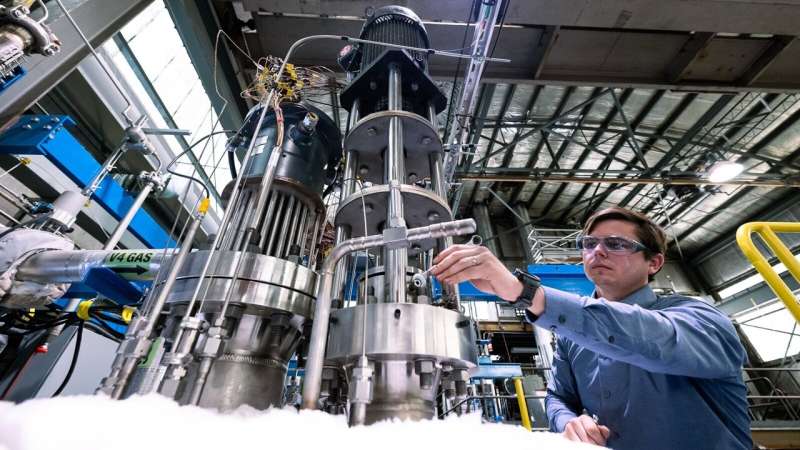This article has been reviewed according to Science X's editorial process and policies. Editors have highlighted the following attributes while ensuring the content's credibility:
fact-checked
peer-reviewed publication
trusted source
proofread
Advances in machine learning for nuclear power operations spell a brighter future for carbon-free energy

In an impressive combination of nuclear technology and machine learning (ML), a team of scientists at the U.S. Department of Energy's (DOE) Argonne National Laboratory has unveiled a significant finding in maintaining safety and efficiency in a type of next-generation nuclear reactor, known as a sodium-cooled fast reactor (SFR).
An SFR is a type of nuclear reactor that uses liquid sodium to cool its core and efficiently create carbon-free electricity by splitting heavy atoms. While they aren't used commercially in the U.S. yet, many believe these reactors could revolutionize power production and help reduce nuclear waste. However, they come with challenges, such as maintaining the purity of their high-temperature liquid sodium coolant. That aspect is crucial in preventing corrosion and blockages in the system.
To address these challenges, Argonne scientists designed a new ML system, which is detailed in a recent Energies journal feature article.
"By harnessing the power of machine learning to continuously monitor and detect anomalies advances the state of the art in instrumentation control," said Alexander Heifetz, principal nuclear engineer at Argonne and co-author of the article. "This will create a breakthrough in the efficiency and cost-effectiveness of nuclear energy systems."
First, the team created a ML model to continuously monitor the cooling system. The model is equipped to analyze data from 31 sensors at Argonne's Mechanisms Engineering Test Loop (METL) facility that measure variables like fluid temperatures, pressures and flow rates. The METL facility is a unique experimental facility designed to safely and accurately test materials and components proposed for use in these reactors.
It also trains the engineers and technicians (and now ML models) who could help operate and maintain them. A comprehensive system enhanced with ML may facilitate more robust monitoring and prevent anomalies that could disrupt the functioning of an actual reactor.
Second, the team demonstrated the model's ability to detect operational anomalies swiftly and accurately. They put this to the test by simulating a loss-of-coolant type anomaly, which is marked by a sudden spike in temperature and flow rate. The model detected the anomaly within approximately three minutes of its initiation. This ability underscored its effectiveness as a safety mechanism.
Lastly, the research points toward significant improvements for future models. As it stands, the model flags any spike that exceeds a predetermined threshold. However, this method could lead to false alarms due to incidental spikes or sensor errors. Not every spike is an anomaly. The team plans to refine the model to distinguish between genuine process anomalies and random measurement noise. This includes requiring the signal to remain above the threshold value for a certain period before it's considered an anomaly. They will also incorporate spatial and temporal correlations between sensors into the calculation of loss.
"Although we're using the unique capabilities of METL to develop and test our algorithms in a liquid metal experimental research facility, there is potential to see applications in advanced reactors," said Heifetz. "That can provide more carbon free energy in the future."
Alexandra Akins, a research aide at Argonne and co-author of the article, agrees. "Our research on anomaly detection using machine learning enhances the promise of nuclear energy."
More information: Alexandra Akins et al, Anomaly Detection in Liquid Sodium Cold Trap Operation with Multisensory Data Fusion Using Long Short-Term Memory Autoencoder, Energies (2023). DOI: 10.3390/en16134965















